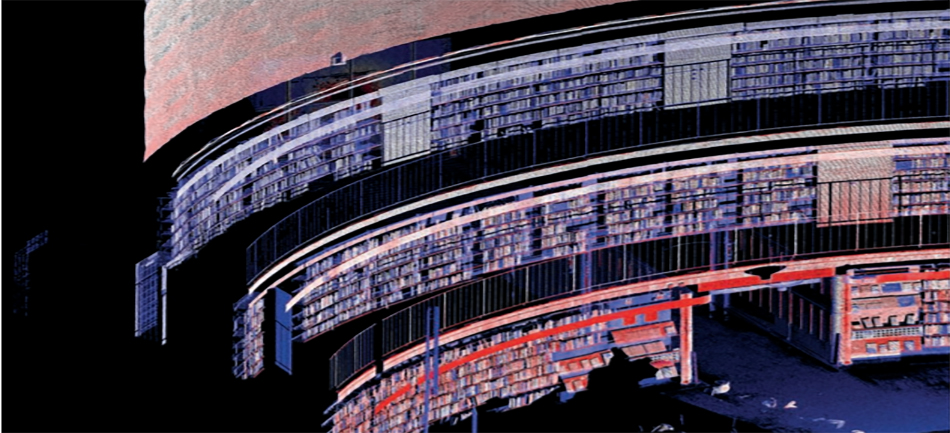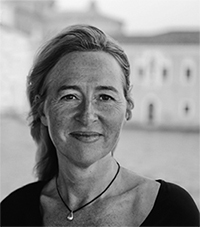Redesign in focus for a sustainable cultural heritage

Thordis Arrhenius is a newly promoted professor at KTH Architecture with a strong interest in contemporary architecture and urban planning. In her research and teaching, she has committed herself to how the modern cultural heritage can be preserved and developed in a sustainable way. How can we take care of and identify architectural qualities in that which has already been built?

Thordis studied Architecture at KTH and defended her doctoral thesis in 2003. She was recently promoted to Professor in architecture at KTH. This is the third time that Thordis has received the title of Professor. From 2007 to 2014, she was a professor of architectural history at Oslo School of Architecture and before returning to KTH 2018 as a lecturer, she was a Professor of cultural heritage at Linköping University. She is happy to be back at KTH Architecture.
“It feels great! I have basically worked at architectural schools and with architectural education since 1995, with a break for a few years of cultural research in Linköping. It is very stimulating to return to KTH's architectural education. KTH has incredibly talented national and international architecture students and an exciting teaching team. I think it is great to once again be involved in architectural education and with contemporary architecture - this is where I have my roots, so to speak. I am passionate about creating strong connections between teaching and research and together with architect and teacher Mikael Bergquist, I have built a new research-oriented master studio for year 4-5. ”
The master studio Re-master is focused on modern cultural heritage and sustainability and addresses re-storation, re-use and re-pair.
“The environmental impact created by new construction is much greater than many people might think, even when we build sustainably. In our studio, reuse and preservation are in focus. We look at current, ongoing projects and how they can be managed, changed and preserved in a socially developing and sustainable way. The focus is on examining how we use the existing - without a doubt the best we can do for the environment is to use what we already have. It is not only a technical issue but also an issue of design and aesthetics. As architects, we have an important role to play in the transition to sustainable construction, but when we no longer can only build the new from scratch, we must also learn, and perhaps above all re-learn, how to create ‘new’ from the ‘old’. It requires a lot of new knowledge and skills of the architect. We all know that demolition is not circular but it is often difficult to reuse and achieve desired architectural qualities and functions. Recycling often requires redesign and a new architectural thinking. It is more complex to rebuild and preserve than to demolish and build new. There has not been much focus on preservation in architectural education before - we have as architects been more focused on creating the new - but now it is happening more and more, which is fantastic. Restoration and rebuilding has in many ways become the new 'black' and the architecture students are very interested and engaged! ”
Thordis sees great opportunities with strong links between education and research.
“The master studio functions as an open lab where students can test different ideas and experiment with different alternative solutions. This creates the opportunity for an open, quite unconditional investigations. The research is more critical and less speculative, it of course also needs to be more scientific at a higher level. But both the studio and my research actually touch on the same case studies and focus on socially and political important projects in society. We do not look at what is traditionally seen as 'old' buildings but at the modern cultural heritage - buildings from the 1970s, 1980s, 1990s. Among other things, we have studied the Södra station area in Stockholm in this year's course, plowed through archives and old articles and looked at the ongoing process for historical classifications of the buildings in the area. The Stockholm City Museum is conducting an inventory of these areas, which we are following. How can we develop and at the same time preserve and reuse existing architecture? How can we take care of and highlight qualities in that which has already been built? We are now compiling a publication where we mix texts by researchers and participating guest lecturers with the students' projects and investigations. The publication is intended to reach a wider audience than just the school and thus provoke debate and discuss the issue of architecture, reuse and redevelopment. The students come in with many new perspectives and ideas, it is very exciting. It is also interesting that the students see the buildings and environments from the 70s -80s that we study as very old, almost ancient, which in itself is a fun discovery for us teachers who were involved when these areas were built once upon a time!”
In her research, Thordis is involved in an inter-Scandinavian and interdisciplinary research project, Restoring the Welfare State; Heritage and the Recent Past. The project studies the architecture of the welfare state and its future and has been developed in collaboration between KTH, Oslo University, the Academy of Fine Arts' School of Architecture, KADK Copenhagen and the University of Copenhagen.
“From the 1950s onwards, there was a very rapid development in the Nordic region - new infrastructures were planned and built and historic cities changed in just a few years. An urgent question today is how this extensive heritage from the Scandinavian welfare states is viewed and valued. A lot of buildings from the 1970-1990s are being demolished today, even buildings that have previously been classified as culturally and historically valuable. They do not meet the environmental goals and current requirements for environmental labeling. But demolishing a building and erecting a new one creates the same environmental impact as during 50-years for an existing building! We need to find new ways to see the quality in these constructions as well. Both in the master studio and in the research, we try to identify buildings that may not always count as cultural heritage and understand these in a different way - what about them is unique, what is reusable and what is worth preserving? What qualities are here that are not found anywhere else? When you handle something that already exists, you have to know what it is you are dealing with - that's where the research comes in. We search a lot in different archives and find out how the construction process happened, what the financing looked like; we look at drawings and sketches, read documents and news articles etc. It is incredibly exciting to see old pictures and understand the debate and intentions around the plans when the area was built. It provides the necessary history and holistic view to be able to look ahead and develop current construction in a sustainable way. The connection between cultural heritage, architectural history and design is important and requires a close knowledge of the material and the building technical aspects. If we are set to improve and continue to use our already built environments, it requires in many ways a completely new understanding of what an architect does and can do. That architecture is not just about building new but redesigning what we have is an incredibly important insight for architects of the future.”
Text: Josefin Backman
This is the seventh article in the School of Architecture and the Built Environment 's new series of articles on selected research, education or collaboration initiatives from each department. You can find the previous articles here:
- KTH Architecture: Introducing Lighting Design Research in Architecture
- Civil and Architectural Engineering: He is planning a new student competition about self-sufficiency
- Real Estate and Construction Management: New forum for discussion and cooperation on housing issues
-
Philosophy and History: The Mediated Planet: Claiming Data for Environmental SDGs
-
Sustainable Development, Environmental Science and Engineering (SEED): Collaborations to understand and manage water
-
Urban Planning and Environment: What makes us decide to change our travel behavior, to opt for innovation and a sustainable future?

